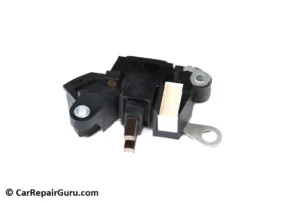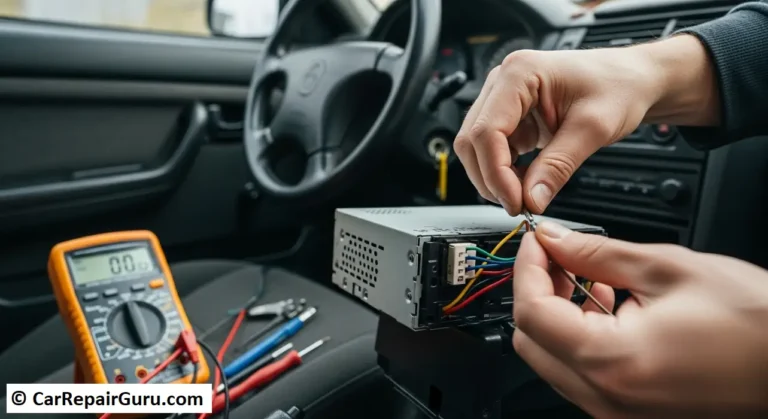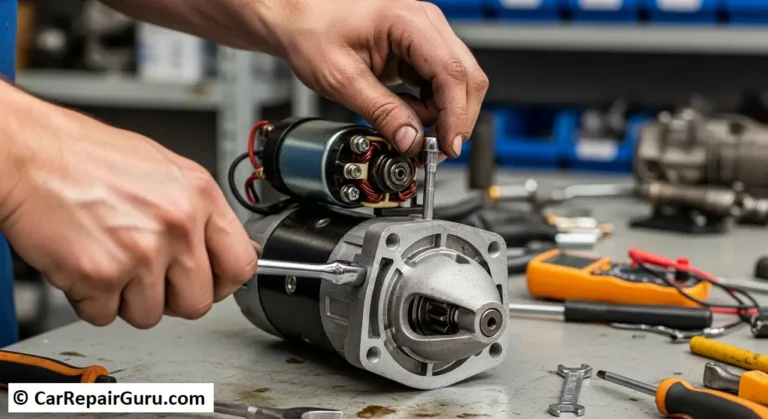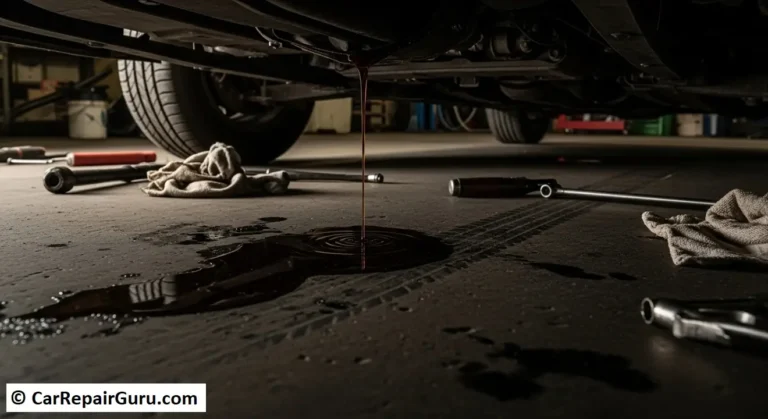
Ever wondered what keeps your car’s electrical system running smoothly, even when you’re blasting the radio, using GPS, and driving at night? It’s not magic—it’s your car’s voltage regulator doing the heavy lifting behind the scenes.
The voltage regulator in cars is a small but vital component that often goes unnoticed—until something goes wrong. It ensures that your car’s battery and electrical systems receive the correct voltage output from the alternator. Without it, your lights could flicker, your battery could overcharge (or undercharge), and sensitive electronics could be damaged.
Understanding how this component works isn’t just for mechanics—it’s valuable knowledge for any car owner. Whether you’re someone who likes to get your hands dirty under the hood or just wants to avoid expensive repair bills, knowing the basics of the voltage regulator can save you time, money, and frustration down the road.
So let’s break it down.
What Is a Voltage Regulator in Cars?
Think of a voltage regulator as your car’s personal electrician. Its job? To make sure the right amount of electrical power flows from the alternator to your car’s battery and various components—no more, no less.
Simple Definition
The voltage regulator in cars is an electronic device that controls the voltage output of the alternator. It keeps the voltage within a safe range (typically around 13.5 to 14.5 volts) to ensure your battery charges properly and your electronics run smoothly.
Without a car voltage controller like this, your vehicle could suffer from overcharging (which can fry electronics) or undercharging (which leaves your battery drained).
Where Is It Located?
There are generally two types of setups:
- Internal voltage regulator: Built into the alternator, commonly found in most modern vehicles.
- External voltage regulator: Mounted separately from the alternator, often seen in older or heavy-duty vehicles.
No matter where it’s located, the alternator voltage regulator plays the same essential role—managing power delivery from the alternator to the car’s electrical system.
Role in the Car’s Electrical System
This small but mighty electrical regulator:
- Maintains stable voltage across the vehicle’s systems
- Protects sensitive components like your ECU (Engine Control Unit) and infotainment systems
- Ensures your headlights, dash lights, power windows, and even your phone charger get consistent power
In short, the voltage regulator in cars is the gatekeeper of your electrical system. If it fails, you could be facing anything from dim headlights to a completely dead battery.
How Does a Voltage Regulator Work?
Now that you know what a voltage regulator is, let’s walk through how it actually works inside your car—step by step. Don’t worry, we’ll keep it simple and practical.
Step-by-Step Breakdown of Its Operation
- Alternator Generates Electricity
As your engine runs, the alternator spins and creates alternating current (AC). This electricity powers your car’s systems and charges the battery. - Voltage Regulator Monitors Output
The voltage regulator in cars constantly monitors the voltage level produced by the alternator. - Voltage Control
If the voltage is too high, the regulator reduces the amount of current sent to the alternator’s rotor, lowering the output.
If the voltage is too low, it allows more current to flow, increasing the alternator’s output. - Battery and Electronics Get Stable Power
The result? A consistent and safe voltage—usually around 13.8 to 14.5 volts—flows to the battery and your car’s electrical systems. - Repeat Every Millisecond
This process happens constantly and automatically, adjusting in real time based on your car’s power needs—like when you turn on the AC, headlights, or stereo.
Why Voltage Regulation Matters
- Prevents your battery from overcharging, which can reduce its lifespan
- Avoids undercharging, which can leave you stranded
- Keeps sensitive electronics—like sensors and computers—safe from voltage spikes
So essentially, the car voltage controller acts like a power manager. It keeps your electrical system running efficiently and safely, no matter what.
Signs of a Failing Voltage Regulator

A faulty voltage regulator in cars can cause all sorts of strange—and frustrating—electrical issues. Since it’s responsible for managing the power flow throughout your vehicle, even small failures can lead to big problems.
Here are some common warning signs that your car voltage controller might be on its way out:
1. Flickering or Pulsing Headlights
Your headlights might dim and brighten on their own, especially when idling or accelerating. This happens when the alternator voltage regulator can’t maintain a steady voltage output.
2. Dimming Dashboard Lights
If your instrument panel lights are weaker than usual—or fade while driving—that’s a red flag. It suggests unstable voltage levels reaching your car’s internal electronics.
3. Battery Overcharging or Undercharging
A faulty electrical regulator can send too much or too little power to your battery.
- Overcharging can cause the battery to swell or leak acid.
- Undercharging leaves your battery weak, which can lead to slow starts or a completely dead battery.
4. Car Won’t Start or Randomly Stalls
Voltage issues can prevent your vehicle’s ignition system from working correctly.
- If the car won’t start, the battery may not be receiving a proper charge.
- If it stalls while driving, the voltage regulator may be cutting power to critical components like the fuel injection or ignition system.
Don’t ignore these signs. Catching a failing voltage regulator early can save your battery, alternator, and onboard electronics from costly damage.
Causes of Voltage Regulator Failure
Like any part of your vehicle, the voltage regulator in cars isn’t designed to last forever. Over time—or under certain conditions—it can fail, leading to all kinds of electrical issues.
Here are the most common reasons why a car voltage controller might stop doing its job:
1. Age and Wear
Just like brake pads or spark plugs, voltage regulators wear out over time. The internal components—like resistors and transistors—can degrade after years of operation, especially in older vehicles or those with high mileage.
2. Exposure to Heat or Moisture
Under-hood components are exposed to a lot of heat. Add in moisture from rain, road conditions, or humidity, and you’ve got a recipe for corrosion or electrical short circuits. If the electrical regulator is mounted externally, it’s even more vulnerable.
3. Faulty Alternator
A malfunctioning alternator can cause the alternator voltage regulator to fail. If the alternator is producing inconsistent voltage or too much current, it puts strain on the regulator and may eventually burn it out.
4. Electrical Overloads
Installing high-powered audio systems, lights, or accessories without proper wiring can overload your car’s electrical system. This extra demand can damage the voltage regulator in cars, especially if it wasn’t designed to handle the added load.
Understanding what causes voltage regulator failure can help you take preventive steps—like avoiding aftermarket electrical stress, keeping your engine bay clean, and getting your alternator tested regularly.
How to Test a Voltage Regulator in Your Car

If you suspect something’s off with your car’s charging system—like flickering lights or a weak battery—you can perform a simple test at home to check whether your voltage regulator is doing its job.
No need for fancy tools—just a multimeter and a few minutes of your time.
Tools You’ll Need
- Digital multimeter (available at most auto parts stores)
- Safety gloves and glasses (recommended)
- Pen and paper to note voltage readings
Step-by-Step DIY Test Instructions
Step 1: Park Safely and Pop the Hood
- Make sure your car is on a level surface with the parking brake engaged.
- Turn off the engine and open the hood. Locate the battery terminals.
Step 2: Set the Multimeter to DC Voltage
- Choose the 20V DC setting on your multimeter (most car systems run on 12V).
- Connect the red probe to the battery’s positive terminal and the black probe to the negative terminal.
Step 3: Measure with the Engine Off
- Your reading should be between 12.2V and 12.6V if your battery is healthy.
Step 4: Start the Engine
- Let it idle. The voltage should now rise to around 13.8V to 14.5V.
- Below 13V? The voltage regulator might not be sending enough power.
- Above 15V? It could be overcharging, another red flag.
Step 5: Test Under Load
- Turn on your headlights, A/C, and radio.
- Watch how the voltage reacts. It should remain relatively stable within the safe range. Big swings mean trouble.
Safety Precautions
- Always wear gloves and eye protection when working around the battery.
- Keep loose clothing and tools away from moving engine parts.
- Be cautious—batteries can spark or leak.
When to Call a Pro
If your voltage readings are way off, or you’re unsure about interpreting the results, it’s best to let a qualified mechanic take a closer look. A failing alternator voltage regulator can quickly lead to more expensive electrical problems if not addressed.
How to Replace a Voltage Regulator (Optional DIY Section)
If you’ve confirmed your voltage regulator in cars is faulty, the next question is: can you replace it yourself? The answer depends on the type of regulator your vehicle uses—built-in or external.
Built-in vs. External Regulators
- Internal voltage regulator:
Found inside the alternator in most modern vehicles. To replace it, you’ll often need to replace or rebuild the alternator, as disassembling it isn’t always practical for DIYers. - External voltage regulator:
Mounted outside the alternator, usually in older vehicles or trucks. These are much easier to access and replace with basic tools.
Step-by-Step: Replacing an External Voltage Regulator
Estimated Time: 30–60 minutes
Difficulty Level: Moderate (basic mechanical skills required)
What You’ll Need:
- Replacement voltage regulator (OEM recommended)
- Socket wrench set
- Screwdrivers
- Gloves and eye protection
- Service manual for your specific vehicle (for wiring reference)
Steps:
- Disconnect the Battery
- Always disconnect the negative battery terminal before starting to prevent shocks or shorts.
- Locate the Voltage Regulator
- Check your owner’s manual or vehicle repair guide. It’s usually near the alternator or firewall.
- Remove the Old Regulator
- Use a socket wrench to remove bolts or screws securing the unit.
- Carefully disconnect the wiring harness (snap photos for reassembly reference).
- Install the New Regulator
- Connect the wires to the correct terminals.
- Secure the new regulator in place using the original hardware.
- Reconnect the Battery and Test
- Start the engine and check voltage output with a multimeter (refer to the test section above).
- Make sure the reading is stable and within range (13.8V–14.5V).
When to Call a Mechanic
- If your regulator is built into the alternator, replacing it often means replacing the entire alternator assembly.
- If you’re unsure about wiring, don’t have the tools, or simply want peace of mind, it’s always safer to leave the job to a professional.
- Modern vehicles with integrated electronic systems may require reprogramming or diagnostic tools post-installation.
Tips to Extend the Life of Your Voltage Regulator

A healthy voltage regulator in cars means a stable electrical system—and fewer breakdowns. While these components are built to last, a few simple habits can significantly extend their lifespan.
Here’s how to keep your car voltage controller running strong:
1. Regular Battery Maintenance
- Check terminals for corrosion or buildup and clean them regularly.
- Ensure the battery is holding a proper charge (between 12.4V and 12.6V when the engine is off).
- Replace old or weak batteries—an unstable battery can stress the electrical regulator and alternator.
2. Avoid Overloading Electrical Systems
- Installing high-powered audio systems, extra lighting, or aftermarket electronics?
Make sure your alternator and regulator can handle the extra load. - Use fuses and relays properly to prevent electrical surges that can damage the alternator voltage regulator.
3. Periodic Charging System Checks
- Test your voltage output with a multimeter every few months—especially before long trips or seasonal changes.
- Many auto parts stores offer free alternator and battery testing—take advantage of it.
- Address signs like flickering lights or slow starts early to avoid costly damage.
Conclusion
The voltage regulator in cars might be a small part, but it plays a massive role in keeping your vehicle’s electrical system stable and efficient. Whether it’s powering your headlights, charging your battery, or keeping your onboard computers running smoothly—it’s the unsung hero behind the scenes.
Understanding how it works, recognizing early warning signs, and performing simple tests or maintenance can save you from unexpected breakdowns and costly repairs.
Notice symptoms? Don’t wait—check your voltage regulator today!
A quick inspection or test could mean the difference between a minor fix and a major repair.
FAQ
1. What happens if the voltage regulator fails while driving?
If your voltage regulator in cars fails on the road, you might experience flickering lights, a dead battery, or sudden stalling. The electrical system won’t get consistent power, which can lead to unsafe driving conditions and potential breakdowns.
2. Can I drive with a bad voltage regulator?
It’s not recommended. Driving with a faulty car voltage controller risks damaging your battery and alternator, and could leave you stranded. If you notice symptoms like dim lights or stalling, have your vehicle checked promptly.
3. How much does it cost to replace a voltage regulator?
The cost varies depending on your car model and whether the regulator is internal or external. External regulators can cost between $50 and $150, while replacing an alternator with a built-in regulator might range from $300 to $700 or more, including labor.
4. Is the voltage regulator part of the alternator?
In most modern cars, yes. The alternator voltage regulator is often built inside the alternator. Older models may have an external regulator mounted separately.
5. Can a faulty voltage regulator drain my battery?
Absolutely. A malfunctioning regulator can cause undercharging or overcharging. Undercharging leaves your battery weak, while overcharging can damage it—both leading to premature battery failure.






